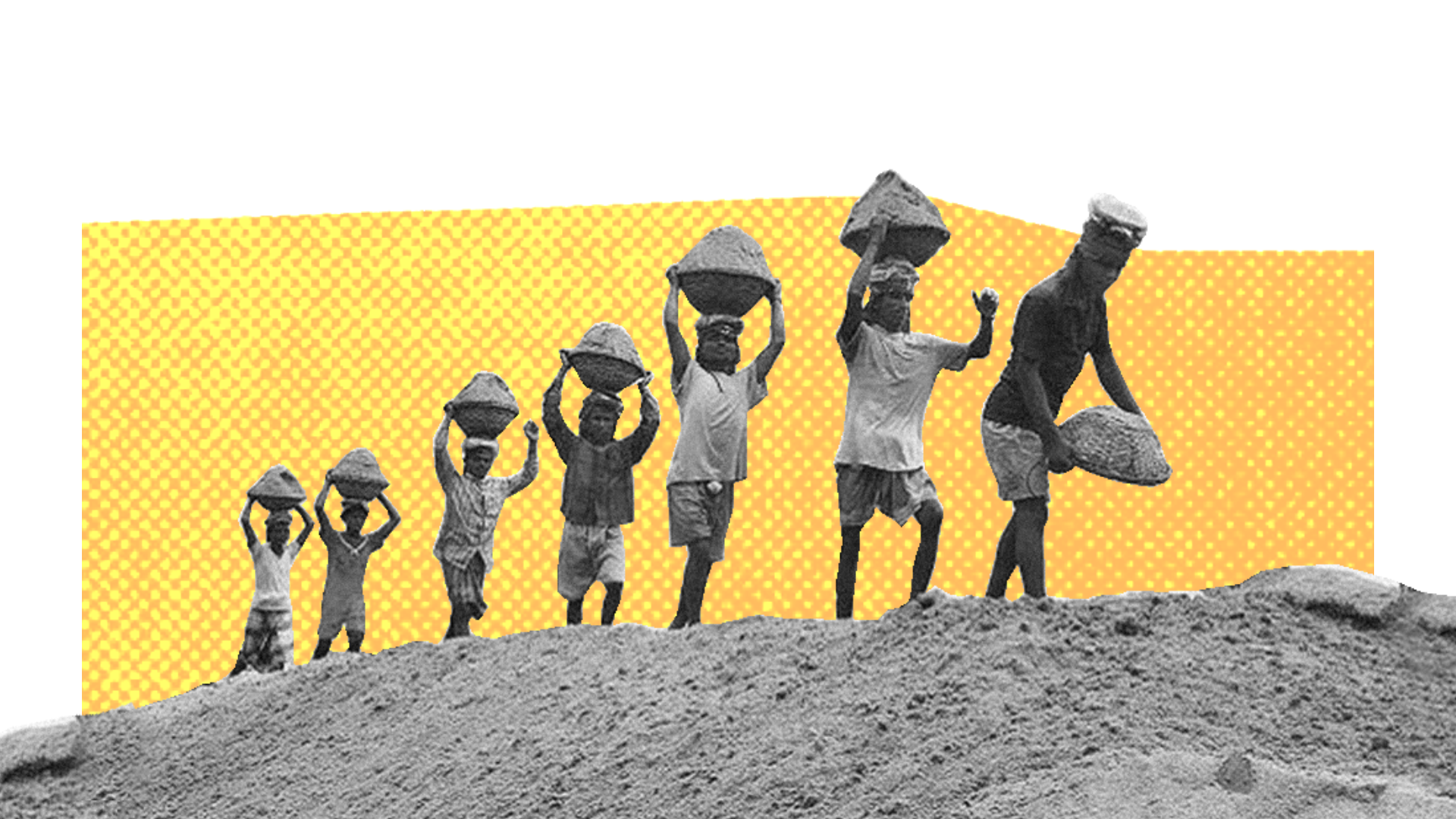India, with its vast population and dynamic economy, presents a complex landscape of income distribution. The disparities in earnings across various segments highlight socio-economic challenges and paint a picture of the economic realities faced by millions. From high-earning elites to those struggling on minimum daily wages, the income spectrum in India reveals both opportunities and challenges.

High-End Earnings: A Privileged Few
A significant but small percentage of the Indian population belongs to the elite earning bracket. Approximately 1.4 crore Indians earn more than ₹2 lakh per month. This segment represents the top layer of India’s workforce—successful professionals, entrepreneurs, and individuals in high-ranking corporate positions. These high earnings often stem from sectors like information technology, finance, consulting, and top-tier management roles. The economic and social privileges associated with such earnings often translate to better access to healthcare, education, and a quality lifestyle, setting them apart from the rest of the population.

For those in this category, earnings serve not only as a means to a comfortable life but also as a way to accumulate wealth, invest in assets, and achieve financial security. This group often benefits from globalization, the rapid growth of India’s tech industry, and access to multinational corporations offering competitive pay. However, the high earnings of this group can also lead to economic inequalities, as they command a disproportionate share of national wealth.
Mid-Tier Earnings: The Middle-Class Backbone
The middle-income category in India, represented by 5 crore individuals earning around ₹50,000 per month, forms the backbone of the economy. This segment includes professionals, government employees, educators, small business owners, and skilled workers. Although these earnings are modest compared to the elite, they allow for a decent standard of living, access to education, healthcare, and some discretionary spending. The aspirations of this group are often tied to providing better futures for their families, such as higher education for children and homeownership.
This earnings bracket faces unique challenges, including inflation, housing costs, and the rising cost of living. While they experience a certain level of financial stability, they remain vulnerable to economic downturns, job insecurity, and unexpected expenses. For this group, earnings are both a measure of stability and a constant reminder of the financial hurdles they need to overcome to move up the economic ladder.
Low-Tier Earnings: Monthly Income Challenges
Below the middle-income group lies a substantial section of the population—20 crore people who earn approximately ₹1.5 lakh per annum (about ₹12,500 per month). This category represents lower-income individuals who often work in semi-skilled or unskilled jobs. They include factory workers, retail employees, and those in entry-level positions across various sectors. For these individuals, earnings barely cover essential needs, making it difficult to save or invest in long-term assets.
For this group, earnings often mean survival rather than prosperity. Every rupee is carefully budgeted to cover food, shelter, and basic healthcare. Economic policies and inflation significantly impact their lives, as any increase in prices for essentials directly affects their standard of living. This segment’s limited earnings also restrict their ability to access higher education and better employment opportunities, often trapping them in a cycle of low-income work.
Subsistence Earnings: The Daily Wage Struggle
The largest segment, comprising 60 crore Indians, earns about ₹100 per day, translating to an annual income of around ₹36,500. These earnings are insufficient to meet even the most basic needs, leaving this group in a constant struggle for survival. Many of these individuals work as daily laborers, agricultural workers, or in informal sectors with little to no job security or benefits. This group faces significant economic and social challenges, with limited access to education, healthcare, and housing.
 For individuals in this category, earnings are meager and uncertain. The lack of a stable income often forces them into debt, leading to a vicious cycle of poverty. Many of them are dependent on government schemes and subsidies for survival, as their earnings do not allow for any form of savings or economic advancement. This group is most affected by economic disruptions, whether it’s inflation, unemployment, or natural disasters, making them highly vulnerable.
For individuals in this category, earnings are meager and uncertain. The lack of a stable income often forces them into debt, leading to a vicious cycle of poverty. Many of them are dependent on government schemes and subsidies for survival, as their earnings do not allow for any form of savings or economic advancement. This group is most affected by economic disruptions, whether it’s inflation, unemployment, or natural disasters, making them highly vulnerable.
Understanding the Income Disparity
India’s earnings disparity reflects deep-rooted socio-economic divides. While economic growth has lifted millions out of poverty, income inequality remains a persistent challenge. The earnings distribution shows how wealth and resources are concentrated in the hands of a few, while a majority struggle to make ends meet. This disparity impacts not only individual lives but also the broader economy, as low-income groups have limited purchasing power, which affects domestic demand and economic growth.
The earnings landscape also highlights the importance of education, skills, and opportunities. Those in high-earning brackets often have access to better education and career opportunities, which allows them to secure higher-paying jobs. On the other hand, individuals in lower income brackets often lack the skills or opportunities needed to advance economically, creating a cycle of poverty that is difficult to break.
Government Policies and Economic Interventions
Addressing earnings inequality requires comprehensive government policies and economic interventions. Programs focused on skill development, education, and healthcare can empower low-income groups to access better employment opportunities and improve their earnings. Moreover, social welfare schemes, such as subsidies and direct cash transfers, provide a safety net for the most vulnerable.
Investments in infrastructure, rural development, and job creation in semi-urban and rural areas can also help bridge the earnings gap. Encouraging industries that provide stable, well-paying jobs can uplift millions out of poverty and boost the middle-income group. Moreover, tax reforms and policies that encourage wealth redistribution can help address the concentration of income and wealth among the elite.
Conclusion: Where Do You Stand?
The question of where one stands in India’s earnings spectrum is both revealing and thought-provoking. For those fortunate enough to earn in the top brackets, the disparities may serve as a reminder of the privileges they enjoy. For those in the lower brackets, it highlights the daily challenges they face and underscores the need for greater economic opportunity and security.
As India continues its journey toward economic growth, addressing earnings inequality will be crucial for creating a balanced and inclusive economy. Empowering every citizen with the opportunity to earn a decent living not only promotes individual well-being but also strengthens the nation as a whole.

